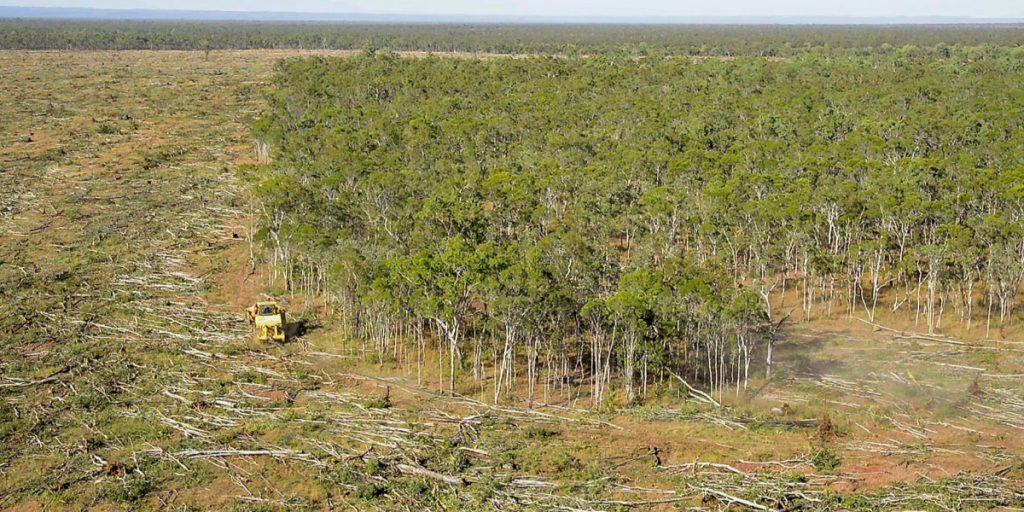Dodgy Offsets Will Not Prevent Collapse

We are supposedly at the stage now where governments are taking climate change seriously and are taking action to reduce emissions. The UN commissioned an expert panel in the lead up to the climate CoP27 in Egypt and the panel recommended that “…serious commitments must prioritise deep cuts in absolute emissions by 2030, with carbon offsets – which allow companies and governments to pay for cuts elsewhere instead of reducing their own pollution – to be used only for further reductions “above and beyond” that”.
Obviously, Australia was represented at CoP27 and signed up to the cover decision, but maybe the delegates weren’t paying attention. How do you otherwise explain the recent outcomes of the Chubb review of Australia’s carbon credit scheme (which pronounced it ‘largely sound’) and the new government’s announcement to continue to rely heavily on carbon credits to reach its 43% emissions reduction target by 2030?
75% of the credits issued under the Australian scheme are for avoiding deforestation, human-induced regeneration of native forests and capturing methane from landfills. This tells you how serious Australia really is about climate change. Reviews of the effectiveness of these credits by the ANU found that “more than 70% of the credits issued under these methods do not represent genuine emissions abatement”.
Of course, we should not be surprised that the Australian government has zero intention of actually reducing its emissions, with coal, iron ore and LNG being our most important exports and with another 114 new fossil fuel projects in the pipeline for development. We should also not be surprised if they get away with keeping the dodgy carbon credits going to create the impression that we all care about ‘tackling’ climate change without having to make any meaningful sacrifice in lifestyle. Why bother with the hard stuff of shutting down fossil fuel projects when you can get away with easy (meaningless) credits?
The same logic applies to biodiversity protection. The Australian government clearly has no intention to stop any significant industrial/mining development or land clearing or expansion of housing since we have to keep ‘growing’ – GDP, the economy, whatever. Instead, developers and farmers can use ‘offsets’, which are just as dodgy and just as useless in protecting biodiversity as carbon credits are for emissions reduction.
The state of NSW has had a biodiversity offset scheme and credit market since 2017 and it was recently examined for its effectiveness by the Auditor General of NSW. The findings are utterly damming and basically show that the whole scheme is completely unable to meet the objective of protecting endangered species and vegetation.
At its centre lies the idea that developers who want to clear native vegetation can purchase biodiversity credits offered by landowners with like-for-like ecosystems/species. That means that “the current biodiversity credit market in New South Wales consists of 1394 different types of ecosystem credits, which are approved to be traded in 364 different offset trading groups, and 867 different species credits.”

This already tells you that they used a reductionist approach to market design, which is inevitable if you want to create a financial market. Of course, the likelihood that you can find like-for-like credits is not very big, coastal ecosystems (with high land value for property development) cannot be easily found in the arid inland. So it should not come as any surprise that the auditors found that “around 90% of demand cannot be matched to credit supply”.
If the idea of the scheme was to stop development when matching credits cannot be found, that would be just fine. But that’s not how the scheme works. Instead, “the Scheme allows developers to pay into the Biodiversity Conservation Fund and transfer their obligations to the BCT. This allows the developer to proceed with their project. The BCT must then meet these acquired obligations by buying the required credits, or by undertaking other approved activities set out in the Regulation. The BCT has more options than developers on how and when it acquits its obligations”.
In plain English, the development project can proceed and the obligation to find like-for-like credits (which don’t exist) can be parked with another entity who then … does nothing. It’s the magic of the market at work again!
It also very telling that since the scheme came into force 5 years ago, just 37 landholders entered into Biodiversity Stewardship Agreements that supply credits to the scheme. This contrasts with a pipeline of $112 billion in infrastructure projects in NSW. It should be obvious that the whole scheme cannot possibly work as a way to protect biodiversity (especially since 90% of BSA sites are not even monitored). It works extremely well as greenwashing, though.
In light of these findings it is little wonder that the top priority for the new federal government is to attract private sector investment in biodiversity ‘protection’ and to develop a national market for biodiversity credits! Minister Tanya Plibersek told the National Biodiversity Conference in July that “accounting for nature and biodiversity credits … is a really exciting area of policy… If we can formally credit a landholder’s efforts to enhance an area’s biodiversity. Markets can put a price on that work. Businesses can invest in it their credits. And landholders can then profit from their services to nature”. That’s exactly what the useless NSW biodiversity credit scheme has been doing!
And so the cycle continues. Governments shy away from proper regulation and anti-growth policies to protect the climate/biodiversity and instead rely on the private sector ‘fixing’ the issues it is causing with yet more markets and dodgy credit schemes. They have zero desire to talk about the ONLY thing that is going to make things better in the long term, degrowth, because it will cause pain in the short term. Since we can’t even talk about regulation with proper monitoring and enforcement to stop making things worse right now, we seem to be a long way away from talking about managed degrowth.

Peter Lanius is a physicist by training who has worked in IT, Telecoms and as an executive coach across many industries. He believes in collapsing early to avoid the rush and lives on a 20acre property in regional Australia.





